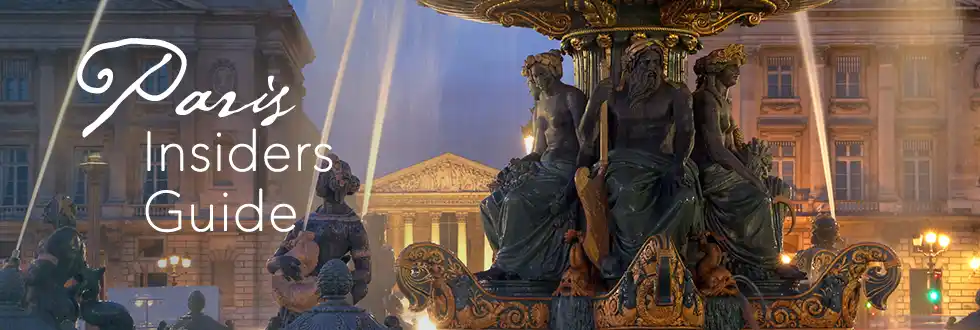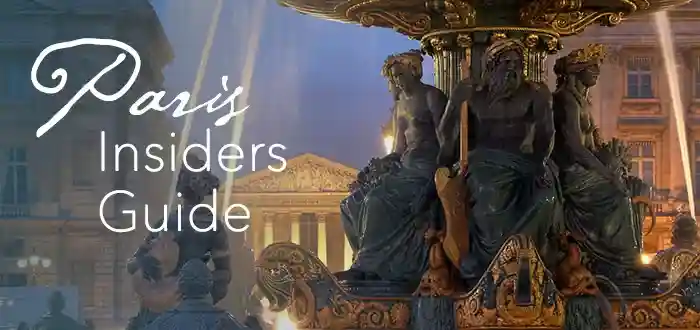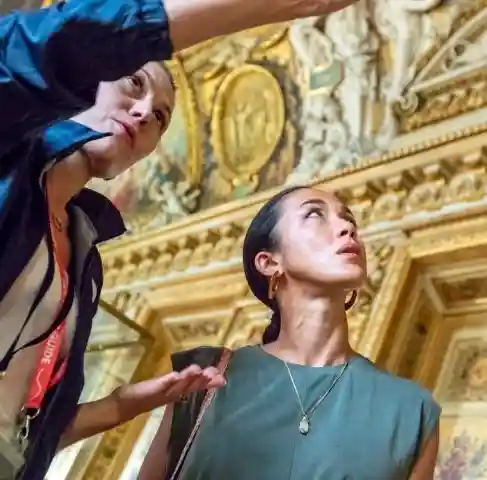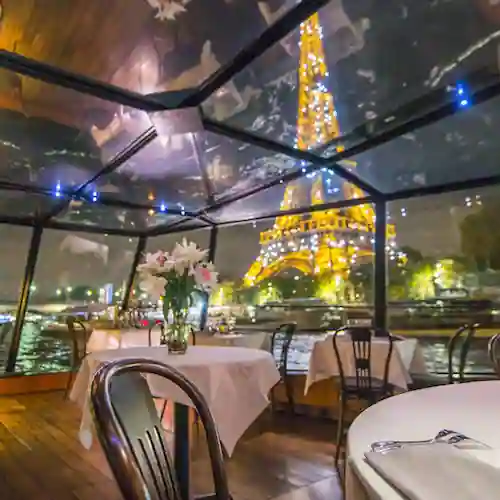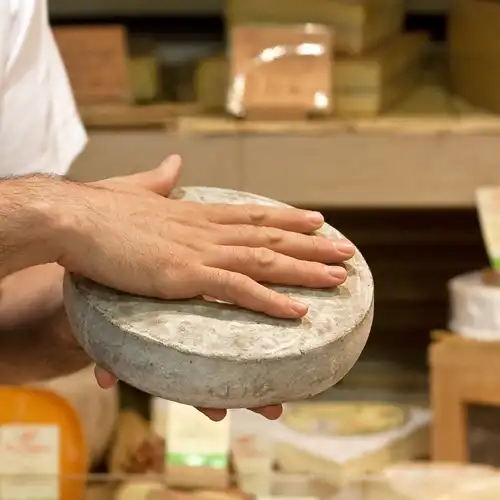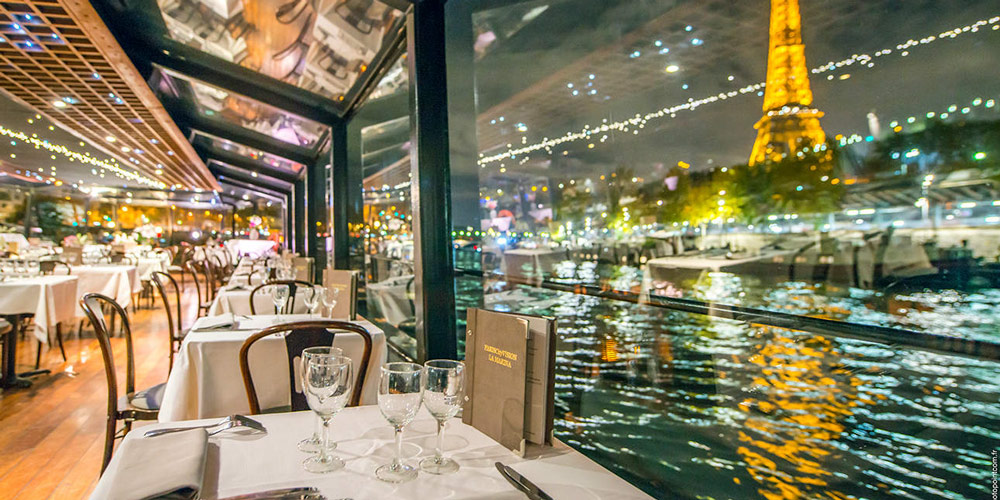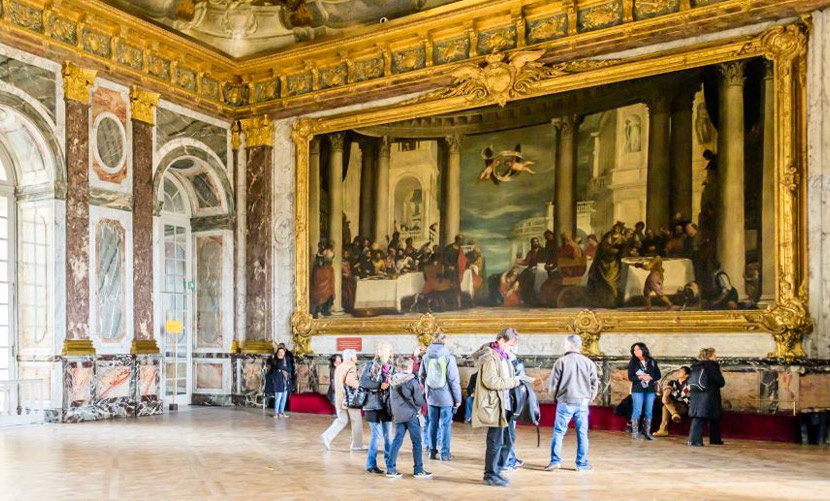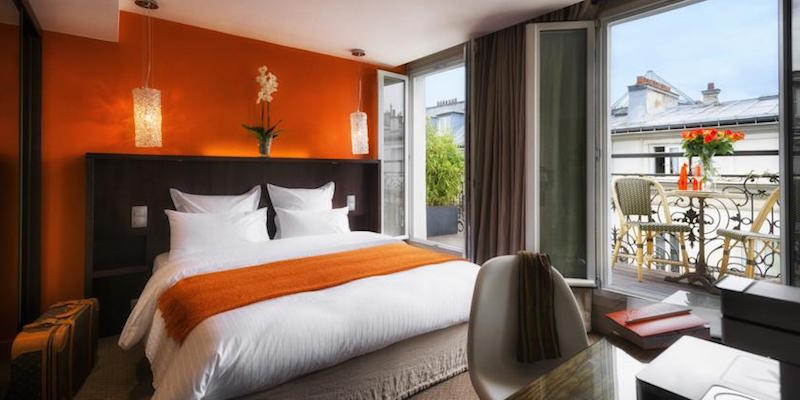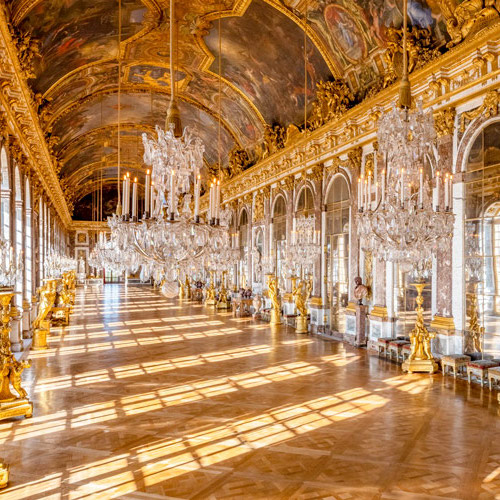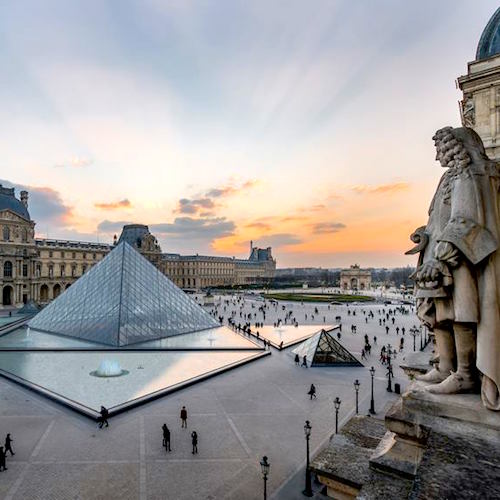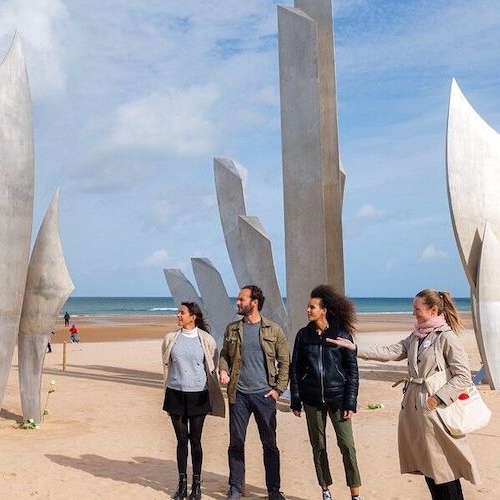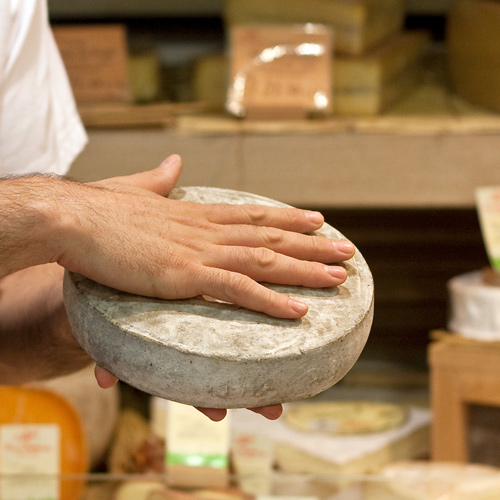Uncover Hidden Paris Landmarks – Explore the City's Secrets
Paris is a city full of iconic landmarks, but its hidden gems offer a unique, off-the-beaten-path experience. Beyond the Eiffel Tower and the Louvre, there are secret spots that capture the essence of the city's rich history and culture. From the remnants of a wall built by France's crusading king, Philippe Auguste, to the eerie attraction of the Paris Catacombs, these lesser-known sites let you experience a different side of Paris. Explore the city's hidden landmarks and discover a Paris you've never seen before.
![]()
Our Top-Rated Paris Tourist Attractions
1. Skip the Eiffel Tower Lines… Less waiting, more fun!
2. Masterpieces of the Louvre… Go directly to the Mona Lisa.
3. Notre Dame & Île de la Cité Tour… Explore the historic island.
4. Musée d'Orsay Impressionism Tour… Monet, Renoir, van Gogh & friends.
1 to 5. The Statue(s) of Liberty
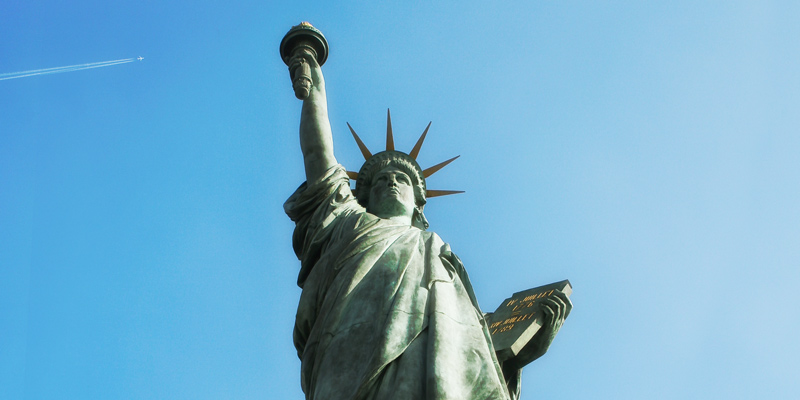 The Statue of Liberty on Allée des Cygnes, photo by Mark Craft
The Statue of Liberty on Allée des Cygnes, photo by Mark Craft
That's right, the Statue of Liberty. It's in Paris. More than once, in fact. You know that New York's Statue of Liberty came from France, right? So it makes sense that in Paris you'd be able to see scale models of it, cast during the time of the construction of the big sister. There's one version out in front of the entry to the Musée des Arts et Metiers in the 3rd Arrondissement. By the way, that's a fun museum — great for families, too.
But the statue of Ms Liberty we like even better is on a island in the Seine on the diagonally opposite side of Paris. In the middle of the river, between the 15th and 16th Arrondissements, there's a long, thin, straight-as-arrow island named Allée des Cygnes and on its lower end there stands another, taller Liberty.
You reach Allée des Cygnes by crossing at Pont de Grenelle, two bridges downriver from the the Trocadero and the Eiffel Tower. At the middle of the bridge you'll see Lady Liberty's head and flame sticking up above the level of the bridge. You reach the island, and the base of the statue, by stairs that go down from the bridge. You'll also be rewarded with nice views of the Eiffel Tower in the distance.
That's two Statues of Liberty — to discover the other three, read the complete story.
![]()
|
Paris Dinner Cruises on the Seine Dine in style as you glide past the Eiffel Tower, Notre-Dame, and the Louvre on a magical Seine River cruise. Gourmet food, champagne, and Paris lit up at night – it’s unforgettable. |
|
Paris Dinner Cruises on the Seine Dine in style as you glide past the Eiffel Tower, Notre-Dame, and the Louvre on a magical Seine River cruise. Gourmet food, champagne, and Paris lit up at night – it’s unforgettable. |
6. The Wall of Philippe Auguste
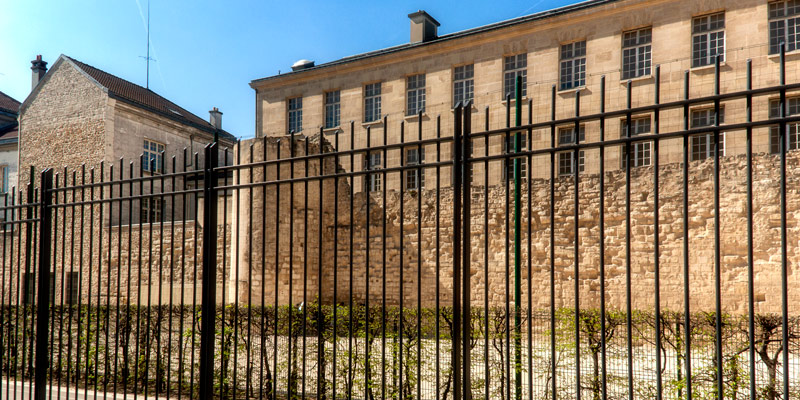 The wall of Philippe Auguste, photo by Mark Craft
The wall of Philippe Auguste, photo by Mark Craft
Since early its history, and until relatively recently, Paris has been surrounded by walls that both defended and marked the limits of the city. As the city grew, old walls would be abandoned or torn down and a new wall would be built further out. In the 12th century, French king Philippe Auguste built a new wall around his expanded city. He did this just before taking off for the Third Crusade with his then-friend King Richard Lionheart.
While Philippe's wall was later superseded by walls encircling an even larger city, traces of his wall can still be seen today. The most extensive piece of the wall is in the Marais (Right Bank, 4th Arrondissement). It runs along the school Lycée Charlemagne and the wall in incorporated in part of the building itself, with the school playground in front of the wall.
From Metro Saint-Paul walk east along Saint-Antoine to Rue Saint-Paul and then head south, toward the river, to the small street, Rue Charlemagne. In one short block you come to Rue des Jardins Saint-Paul which runs along a playground for the school. You can't miss the length of stone wall and the remnant of a tower.
7 & 8. Waterfalls of Paris
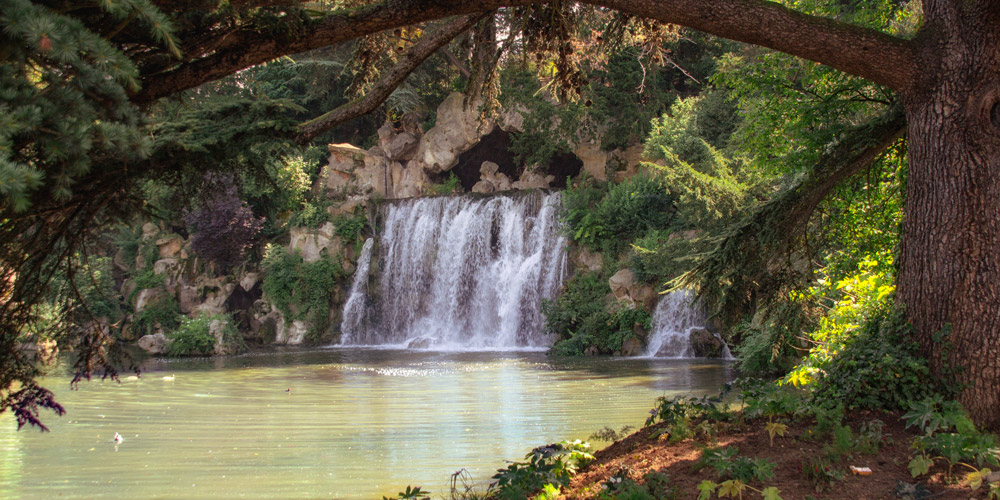 La Grande Cascade, photo by Mark Craft
La Grande Cascade, photo by Mark Craft
Except for a couple of instances (Montmartre comes to mind, of course), Paris is a pretty flat city. So, how can there be waterfalls? The answer is: because of Emperor Napoleon III and his city planner Baron Haussmann. In the massive renovations of Paris that took place in the 19th century Haussmann not only razed buildings, ploughed through broad boulevards, and created the modern sewer system, he also built and revamped parks throughout the city.
To the west, in the Bois de Boulogne where the emperor had his hunting lodge, Haussmann created an artificial waterfall fed by the springs of Passy. It's still there today and the modest hunting lodge has become one of our favourite restaurants, La Grande Cascade, named after the waterfall itself.
Still at it, Haussmann created an entirely new park in the northeast of Paris, Buttes Chaumont, built in a former limestone quarry, and brought back to a verdant greenness by dumping in the tons of the horse manure that was produced in Paris every day. Not only is there another waterfall there, but also a lake and a suspension bridge. It's a wonderful park to visit and a great place for kids to run around.
![]()
Our Top-Rated Paris Experiences
9. Archaeological Crypt of Notre-Dame
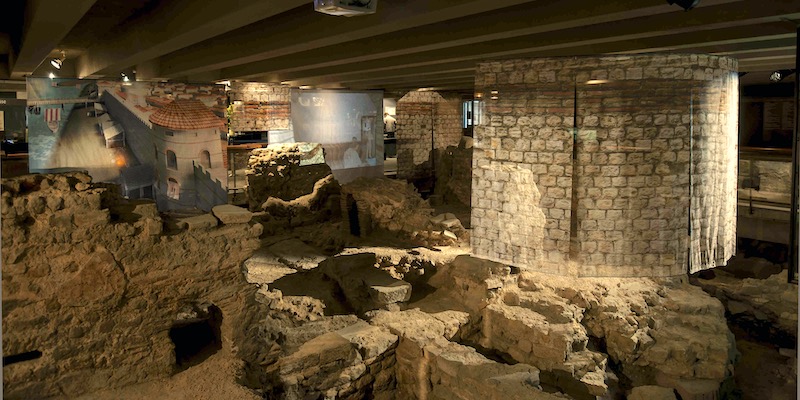 Archaeological Crypt of Notre-Dame
Archaeological Crypt of Notre-Dame
Not many visitors are aware that just in front of Notre Dame is an underground archaeological site that contains remnants of Roman Paris from the first to the third centuries. We don't know about you, but we find this very exciting.
The remains were only discovered during excavations of the place in front of Notre Dame that began in 1965. The archaeological crypt itself was then created to protect the ruins, opening to the public in 1980. It's a fascinating trip into the twenty centuries of history of Île de la Cité. We love the sense of history and human time we get when we discover things like this.
10. The Paris Catacombs
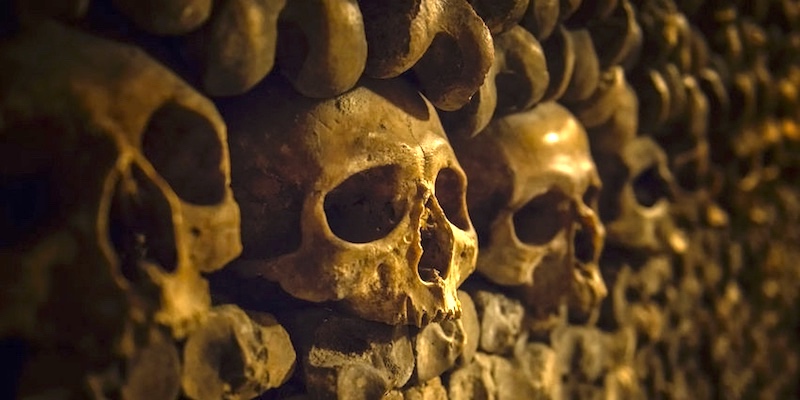 Human skulls line the walls, underground in the Paris Catacombs
Human skulls line the walls, underground in the Paris Catacombs
If you're looking for something a little different. consider a trip to the underworld by visiting the Paris catacombs .
Over the centuries millions of the dead were buried in cemeteries in various spots of the city. By the late 1700s Paris was overcrowded with graves and bodies and, when corpses from adjacent cemeteries started to tumble into the cellars of houses, something had to be done. That's when the city began to evacuate many of the burial grounds and move the bones to the 14th Arrondissement, using the caverns that had been created by limestone mining as their new resting place.
Nowadays you can explore these labyrinths beneath the city that are the final resting place of perhaps six million Parisians. A tour through the Catacombs is an eerie reminder of the long and sometimes bizarre history of Paris. Check availability of the tour for your dates in Paris.
11. The Paris Sewers
Le Musée des Égouts de Paris
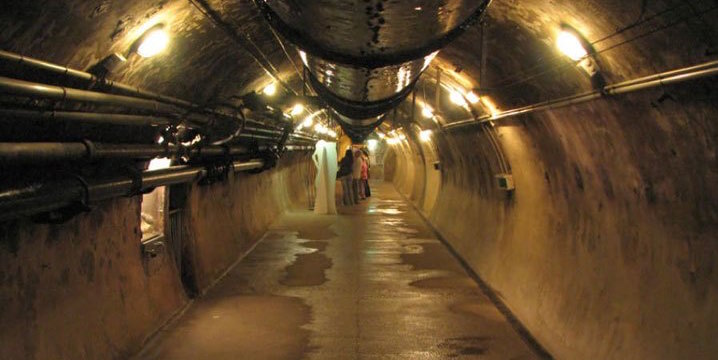
The égouts (sewers) are another hidden underground attraction and have been since the time they were built during the reign of Napoleon III in the mid-nineteenth century. This 2,000-kilometre network of tunnels, if laid end to end, would stretch from Paris to Istanbul. At one time, underground boats cruised the sewers but were eventually banned after bank robbers began making their creative getaways via the égouts!
Interested travelers can visit the fascinating Le Musée des Égouts de Paris, run by the City of Paris.
![]()
|
Browse our hand-picked Paris hotel deals with real-time discounts of up to 20%. Stay in the Marais, Saint Germain, the Latin Quarter, the Left Bank near the Eiffel Tower… every arrondissement is on the list. |
|
Browse our hand-picked Paris hotel deals with real-time discounts of up to 20%. Stay in the Marais, Saint Germain, the Latin Quarter, the Left Bank near the Eiffel Tower… every arrondissement is on the list. |
12. Arts et Metiers Metro Station
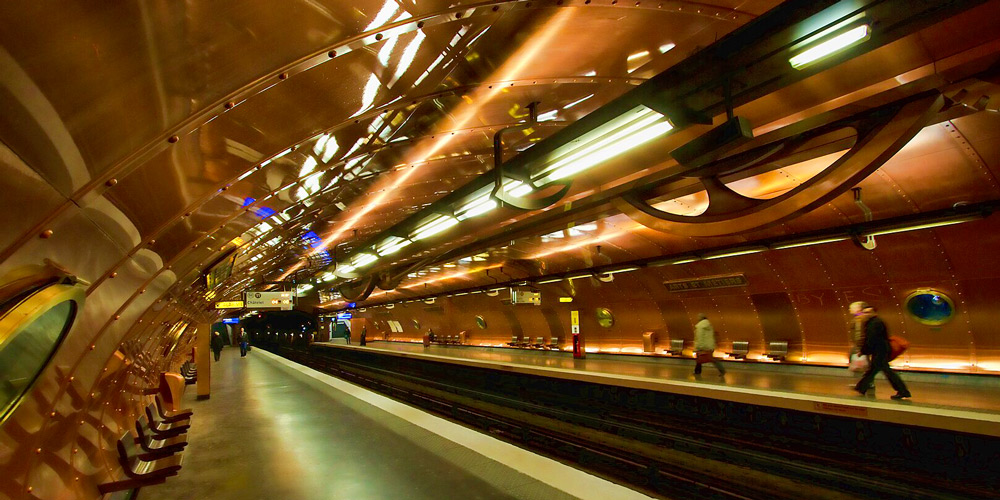 The Arts et Metiers Metro, line 11, photo Wikimedia by Stephen Butterworth
The Arts et Metiers Metro, line 11, photo Wikimedia by Stephen Butterworth
Crypt, Catacombs. Sewers. While we're underground in Paris, let's consider this question — can a Metro station be considered a tourist attraction?
This one can. It serves the national school of Arts et Metiers (Arts and Crafts), as well as the museum of the same name. It's like being inside the submarine Nautilusfrom Jules Verne's Twenty Thousand Leagues Under the Sea. Designed by a famous graphic novel illustrator, it's covered in copper sheeting with portholes, gears and rivets. While you're there, spend some time visiting the fascinating museum "on the surface."
Paris Planning Guides
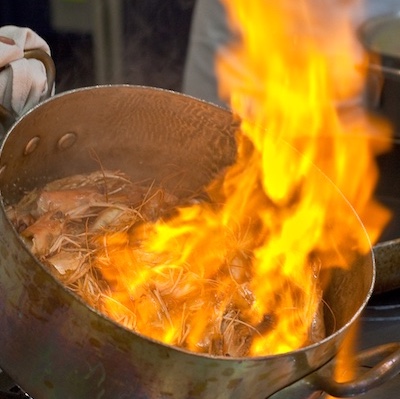 Top 10 Food Tours
Top 10 Food Tours |
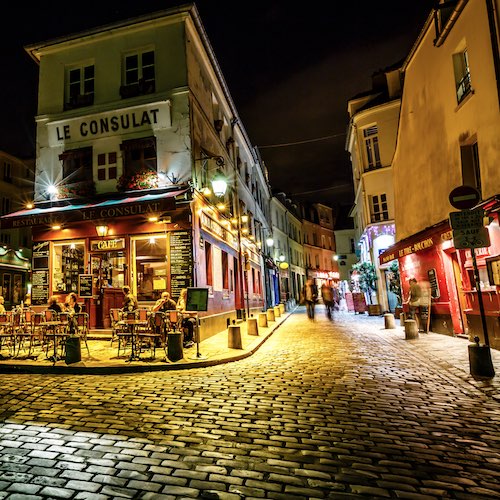 Montmartre Guide
Montmartre Guide |
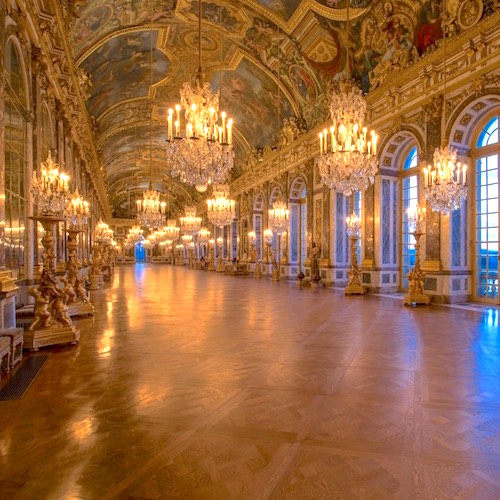 Visiting Versailles
Visiting Versailles |
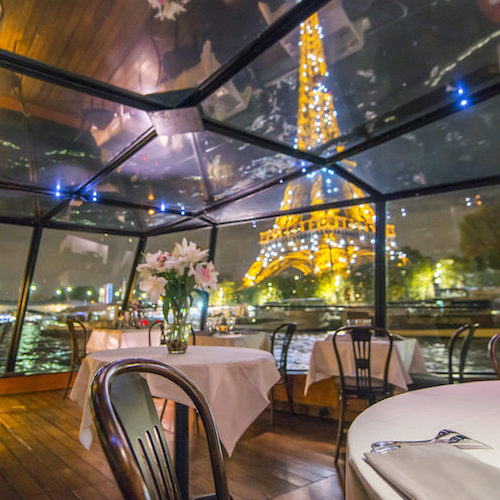 Glorious Dinner Cruises
Glorious Dinner Cruises |
